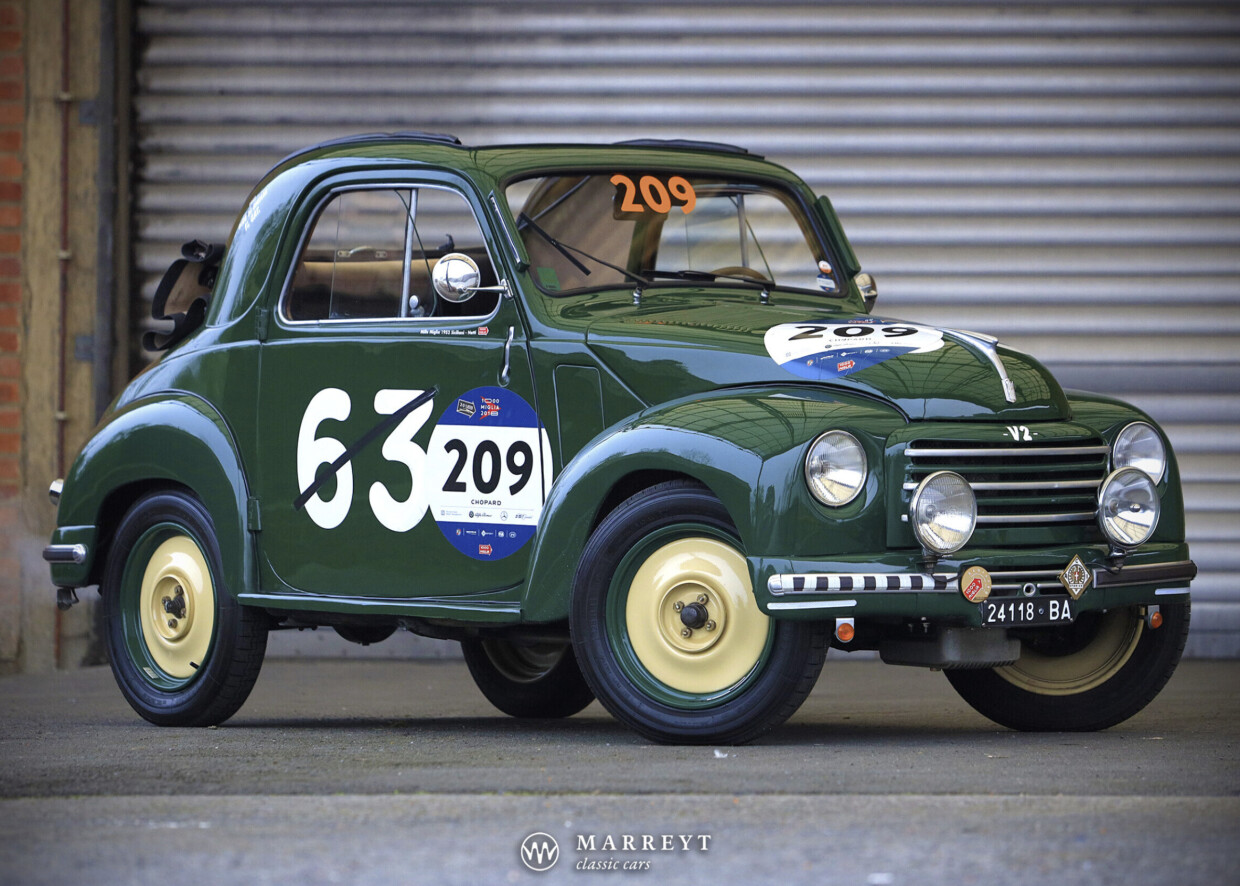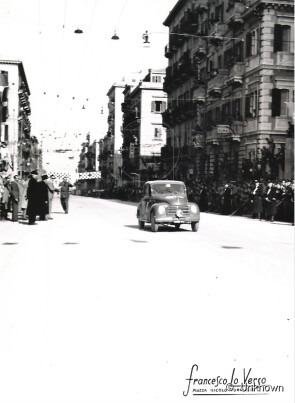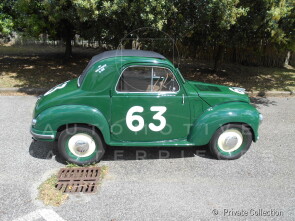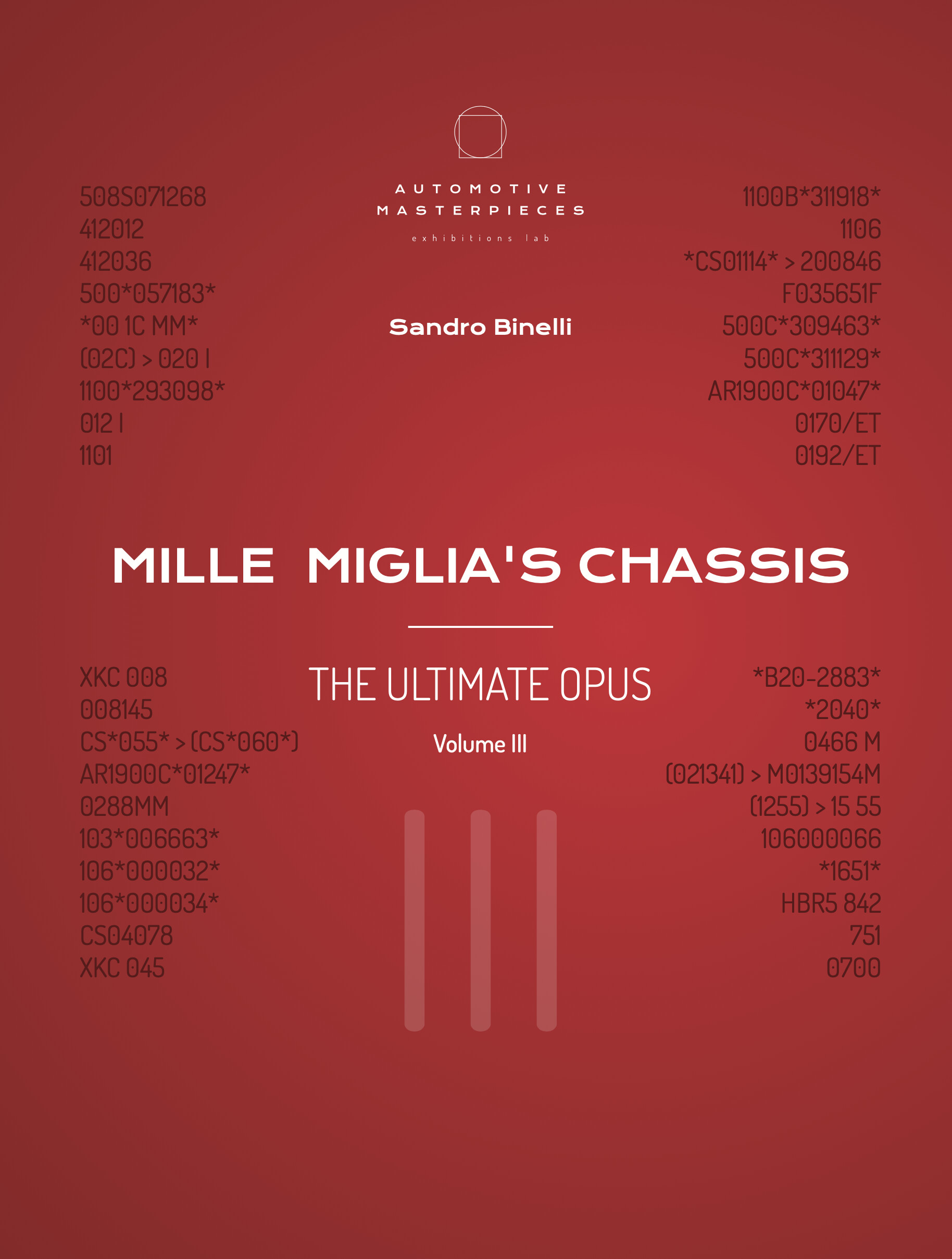
1951 Fiat 500 C
ON/OFF
Why am I an Automotive Masterpiece?
The small "Topolino" is one of the world’s best known cars. Created in the 1930s, it was a car designed to be minimal and economical, but it seems that everyone wanted to use it to race. The origins of the car are interesting; in 1930 Benito Mussolini spoke with Giovanni Agnelli about the imperative need to produce a low-cost car for the masses; it would be good "propaganda", followed by Adolf Hitler's Germany, where Ferdinand Porsche was called to put Volkswagen, "people's car", into production. The car was to cost less than Lit. 5,000: a difficult task. The FIAT chief designer, Antonio Fessia, entrusted the task to a young Dante Giacosa, who took over the previous Balilla project by simplifying every detail; the body lines were inspired by the FIAT 1500 with a tapered hood. Giacosa's aeronautical experience inspired the lightened two-rail chassis, with the engine (569 cc, 4 cylinders, side valve) mounted cantilevered to improve space. Everyone called the car "Topolino", for its size and muzzle similar to a mouse, or more precisely to Walt Disney's Mickey Mouse. In any case, the official name remained FIAT 500. The final price of Lit. 8,900 was higher than the target and very high for an ordinary worker, but the car sold. In 1938 the quarter elliptical rear leaf springs (the so-called " balestrino" or " balestra corta") became normal semi-elliptical leaf springs to improve load capacity. In 1948 the vehicle saw major changes with the "500 B" model, featuring overhead valves, improvements to the chassis and new heating. A new version became available, the "Giardiniera Belvedere", a small "woody" station wagon. In 1949 there was the final change, with the "500 C" model. The front part of the bodywork took on a more modern style, the engine received an aluminum cylinder head. The "Giardiniera Belvedere" became "metallic". The Topolino was often modified, little or radically, for races. Production of the sedan lasted until 1954, replaced by the FIAT 600, while the Giardiniera was produced until 1955. Nearly 520,000 cars were produced.
An example of how, in the post-war period, it was possible to take on top-level competitions with a limited financial commitment. This Topolino or, to be more specific, this Fiat 500 C with chassis no. 500C*309463* was purchased by Carlo Siciliani in December 1951, registered beginning of 1952 and immediately prepared for races. It was entered at the Giro della Sicilia on April 9, 1952, and classified 1st in the 750 cc Turismo class: a great debut. A month later the car faced the Mille Miglia on May 3-4, 1952, covered in a very good time of 18h, 03' 25", placing the Siciliani-Netti team 179-th in the overall ranking and 8th in class. The following year the car will race again the Freccia Rossa, but with less luck, in fact it won't finish the race, withdrawing after Rome. The car was entered in 1954 as well but failed to start. It had better luck elsewhere, earning 1st in class at the 1952 Giro di Sicilia, Coppa della Perugina and Cagliari-Sassari-Cagliari. This Topolino lived its whole life in the South of Italy, guaranteeing it excellent preservation thanks to the hot, dry climate and facilitating the restoration (inside-out) to the exact appearance and specifications as this Topolino was in 1954. The car has obtained ASI and then FIVA awards and it's back on the roads of the Mille Miglia, this time re-enacting.






